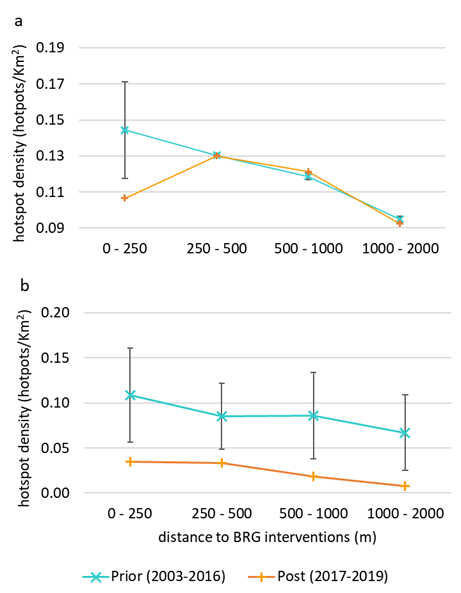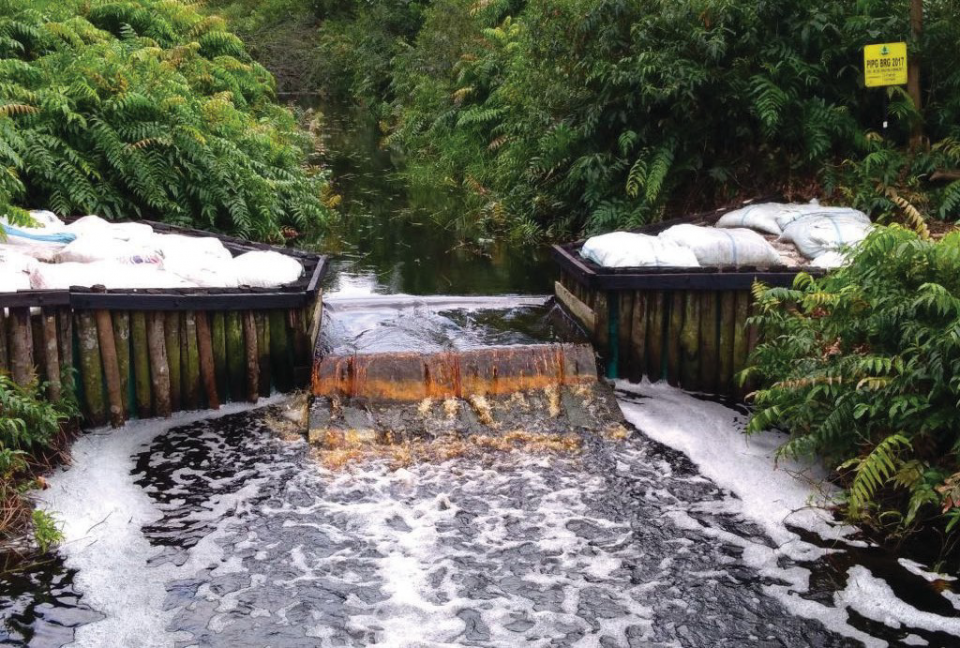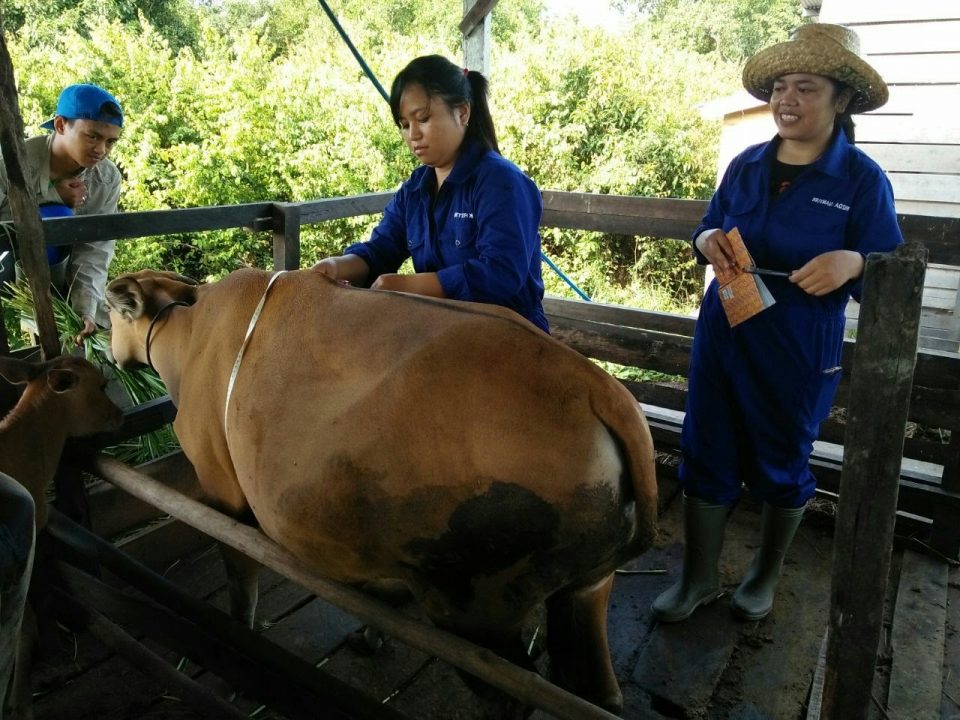In Indonesia, fire prevention begins with peat restoration
Decades of deforestation, fire, land use conversion and drainage have left vast swaths of Indonesia’s peatlands degraded and increasingly vulnerable to wildfire. Dry seasons have increased the flammability of these degraded peatlands, especially on the islands of Sumatra and Kalimantan where annual fires have steadily become larger and more destructive.
Home to 36% of the world's tropical peatlands —storing an equivalent of three years’ worth of global carbon emissions— peat degradation and fire in Indonesia present significant climate risks at the national level and globally.
In 2016, President Joko Widodo established the Peat Restoration Agency (Badan Restorasi Gambut or BRG) to restore nearly 2.5 million hectares of degraded peatland in seven priority provinces —Riau, Jambi, South Sumatra, West Kalimantan, Central Kalimantan, South Kalimantan and Papua--and 57 districts. BRG’s so-called “3R” approach consists of Rewetting dry peatlands, Revegetation to restore tree cover, and Revitalization of local economies.
Earth Innovation Institute (EII) recently completed a preliminary study of BRG’s interventions. We found some promising correlations between fire reduction and BRG interventions. Our study focused on two districts—Pulang Pisau district in Central Kalimantan and Siak district in Riau. More than half of the total area in both districts is peatland. From 2016 to 2018, 1,650 canal blocks and 6,515 deep wells were installed with support from BRG in Pulang Pisau as part of rewetting efforts. BRG also provided economic incentives to 29 villages scattered in 8 sub districts in the form of “livelihood packages” intended to promote alternative revenue streams that do not involve burning and draining of peatlands. These included cattle farming (17 packages), beekeeping (10 packages) and Sengon (Albizia chinensis) cultivation (8 packages). In Siak, 178 canal blocks and 202 deep wells were installed in 2017 and 2018, and 10 livelihood packages were provided to 9 villages located in 7 different sub districts, with cattle farming being the most common (6 packages).
We found that on average, fire detections and burned areas in the two districts decreased after BRG interventions started in 2016 (with one exception in 2019), compared with the annual average from 2003 to 2015, prior to the interventions. We also found that densities of fires detected in both districts experienced a more significant decline in areas within a 250 meter radius of BRG's rewetting infrastructure (see Figure 1). These two findings indicate that a reduction in the number of peat fires correlates with BRG's rewetting infrastructure.


Eighty and 54% of total fires detected in Pulang Pisau and Siak, respectively, between 2003 and 2019 occurred in scrubland and bare land, not in forests. About 70% of all fires in the two districts were detected on lands that were forested in 1990, but were later deforested and subsequently burned. No fires were detected within primary forests in either district over the period studied, however, 7% and 15% of fires occurred in secondary forests.
In Pulang Pisau, approximately 79% of the total burned areas detected between 2003 and 2019 occurred on peatlands, causing an estimated 194 million tonnes of CO2e emissions. Meanwhile in Siak, approximately 90% of the total burned areas detected in the same period occurred on peatlands, producing 23 million tonnes of CO2e emissions.

We also found that BRG’s “livelihood packages” provided important economic benefits to local communities. These livelihood packages have also supported local efforts to prevent and suppress fires, where a portion of the profits generated by the community groups is set aside to fund operations of the Fire Care Community (Masyarakat Peduli Api or MPA), community led fire management organizations. In addition, the communities also help prevent fires from occurring in their areas.
It is pertinent to note that there have also been some interventions by BRG that may not have had the desired effect. In the course of this study, we discovered a case of one community group in Sebangau Jaya village in Pulang Pisau that received a BRG livelihood package to support local honey production in 2018. Unfortunately, due to a prolonged dry season, they experienced a sharp decline in production, forcing them to cease operations. There were no fires detected in this village in 2018. However, fires and burned areas were detected in the village in the following year. The relationship between this particular BRG intervention and fire occurrences in the village is worth deeper analysis.
Next Steps
The results of this preliminary study indicate a correlation between BRG interventions and the reduction of fires on peatlands, and can provide an overview of fire prevention efforts at the local level. However, further studies are needed to understand if there was a causal relationship between the two.


